Executive Summary: Insights from Nottingham 1900-1950
Orthodoxy holds that into the twentieth century local elites increasingly disengaged from their traditional roles as civil leaders in the political and voluntary urban arenas. The reasons offered for this include the growth of suburbanised, spatial and emotional detachment, the rise of fractious party-based politics in local government, industrial dislocation and changing patterns of ownership, the growth of a homogenised national culture that deprecated the local ‘civic’ (Garrard, 1995; Rubenstein, 1998; Trainor, 1998; Gunn, 2000 & 2004).
The evidence from Nottingham suggests such constructs of urban disengagement are seriously misplaced. Instead of disengagement after 1914, instead Nottingham’s traditional elites continued to engage actively during the inter-war years as they had before the war (figure 1). Indeed, the overall status of those involving themselves in the management of voluntary activity rose above that pertaining at the turn of the century (figure 2).
That notwithstanding any aggregates trend, there were considerable variations between voluntary associations in terms of executive membership trends across time, and between institutions (figures 3 & 4). Medical charities continued to attract from the upper social elites of the surrounding areas, although in the case of the city’s General Hospital, these was counterbalanced by an increasing presence of those representing new income streams, particularly the Saturday Fund, which although predominantly working-class in its membership, nonetheless in terms of its management also became professionalised through time. Other charities, like the Mechanics’ Institute, feared less well. Increasingly seen as being peripheral, its wealthier patrons also fell way.
In the world of city politics, the middle-classes continued to dominate. Seventy percent of councillors and aldermen 1900-50 were solidly middle class (figure 5). Amongst the Conservative Party – the largest party until 1945 – 40 per cent would be categorised as upper-middle class. Only after the Second World War did the social composition of the council change. The collapse in Liberal status is also very apparent. Only the Labour Party conformed to the stereotype of the lower-middle member, thought to dominate across the board.
Some 30 per cent of councillors were also magistrates, and 25 per cent of those standing before 1930 were poor law guardians. Upper-middle-class membership here fell consistently, from 73 to 40 per cent for all magistrates, 1900–50, and from 13.5 to 4.5 per cent for poor law guardians, 1900–30 (Figure 6 & 7). Most commonly their replacements, however, were not drawn from the ‘shopocracy’ but from the middle-ranking middle class.
Not surprisingly, given the conclusions thus far, not only was it the case that the better-off continued to volunteer, but it was also more likely that they volunteered more frequently. There are clear linkages, firstly, between income/status and the propensity to volunteer, cross-checking household distribution generally within the city population against the percentage of those locally in each banding who volunteered as officeholders, or as members of a voluntary executive (figure 8); and, secondly, a strong positive correlation between status of individuals and their propensity to volunteer for more than one association (figure 9). Thus, the higher your income (measured by proxy by the value of your house, the more likely that you served with two or more voluntary associations. To contextualise this, only 1½ per cent of city dwelling had a rateable value of £51 pa or over.
Supporting Graphs
 Fig.1
Fig.1
 Fig.2
Fig.2
 Fig.3
Fig.3
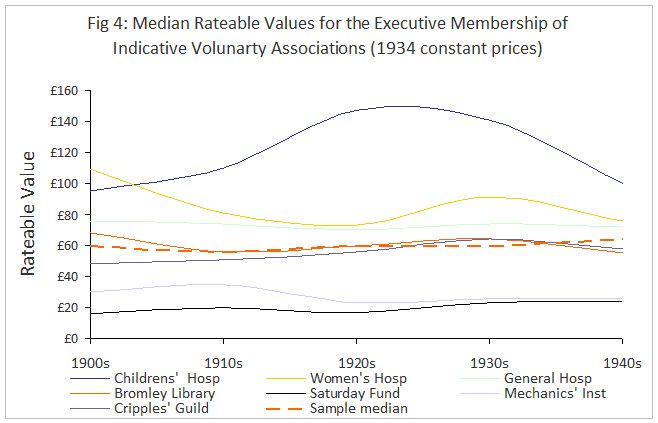 Fig.4
Fig.4
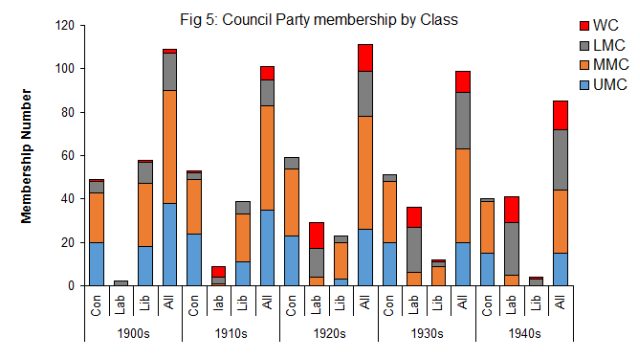 Fig.5
Fig.5
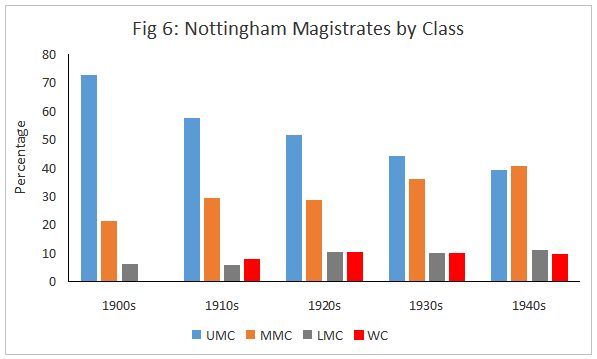 Fig.6
Fig.6
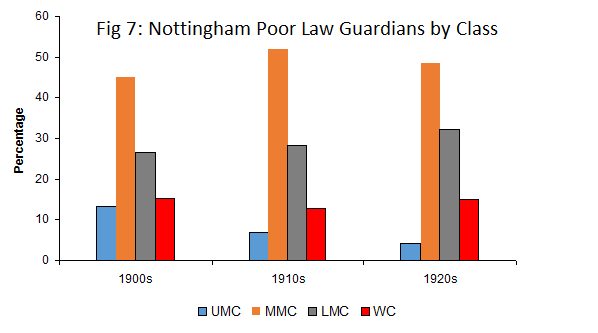 Fig.7
Fig.7
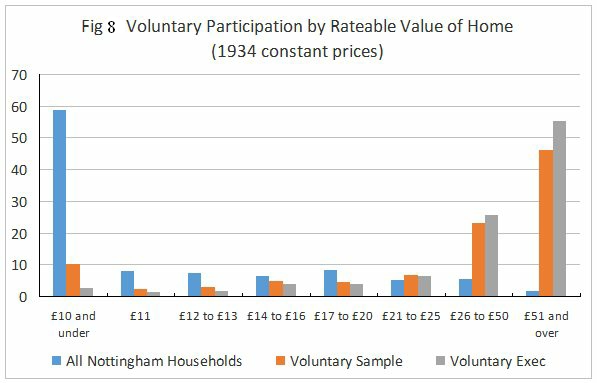 Fig.8
Fig.8
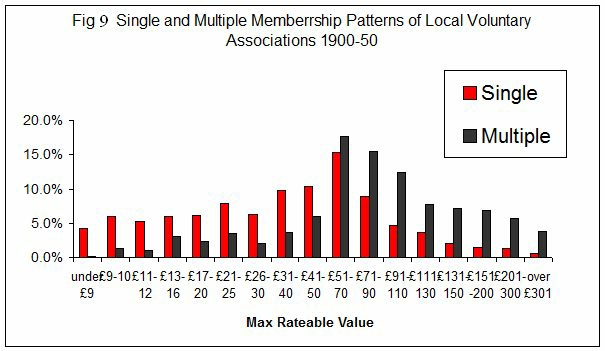 Fig.9
Fig.9










